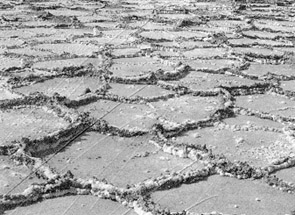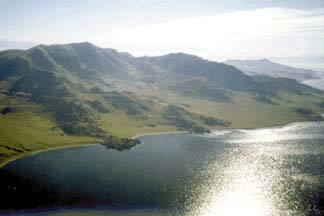

Experiment #3 Salt Flats
 |
 |
| Dasht-e Kavir in Iran | Great Salt Lake |
Salt flats and pans can be found on most deserts. They formed when large bodies of water repeatedly evaporated and left behind a residue of salt. Some salt pans, like our own Great Salt Lake, still have water. In other places, like the Dasht-e Kavir region of Iran, the ground is completely covered with a crust of salt. Explain why salt flats and pans are truly lifeless. Plants and crops can't grow in salt.
Have students get into groups of 5.
To see how a salt flat is formed, have each group stir 5 tablespoons of table salt into 2 cups of warm water.
Pour the solution into glass loaf pans.
Place the pans on a sunny windowsill.
Ask the groups to check the pan each day. Have them use a ruler to find the water level each day. Have them record their findings on a piece of paper.
Continue step 5 until all the water has evaporated.
Have the students transfer their findings onto a Spreadsheet and create a bar graph to compare each groups findings.
When all the water has evaporated, pass the pans around and ask:
Where did the water go?
What is the residue? Allow them to touch and taste.
Start a discussion about evaporation. When someone uses a blow-dryer on wet hair, what happens? Which do you think would dry something faster: heat, wind, or a combination of both?